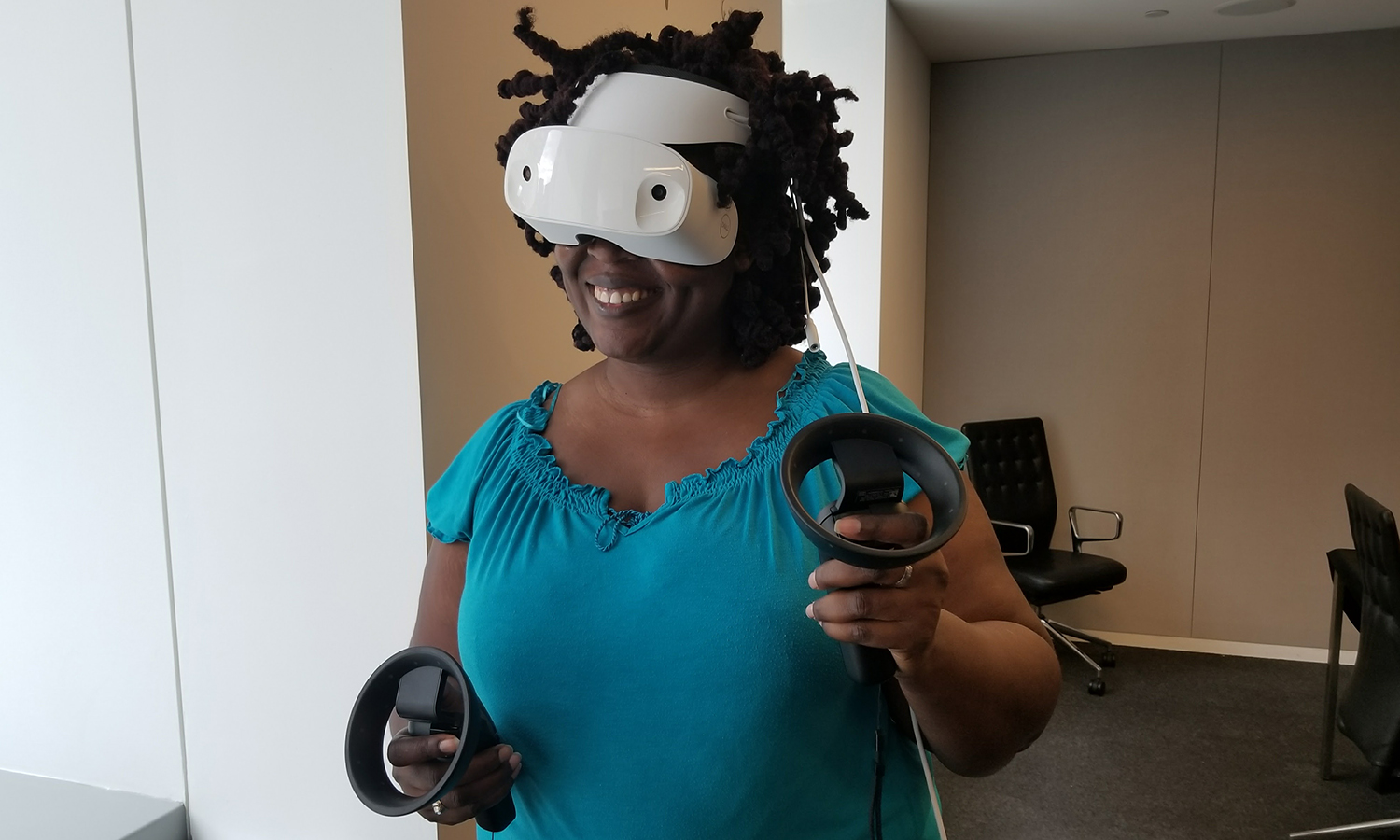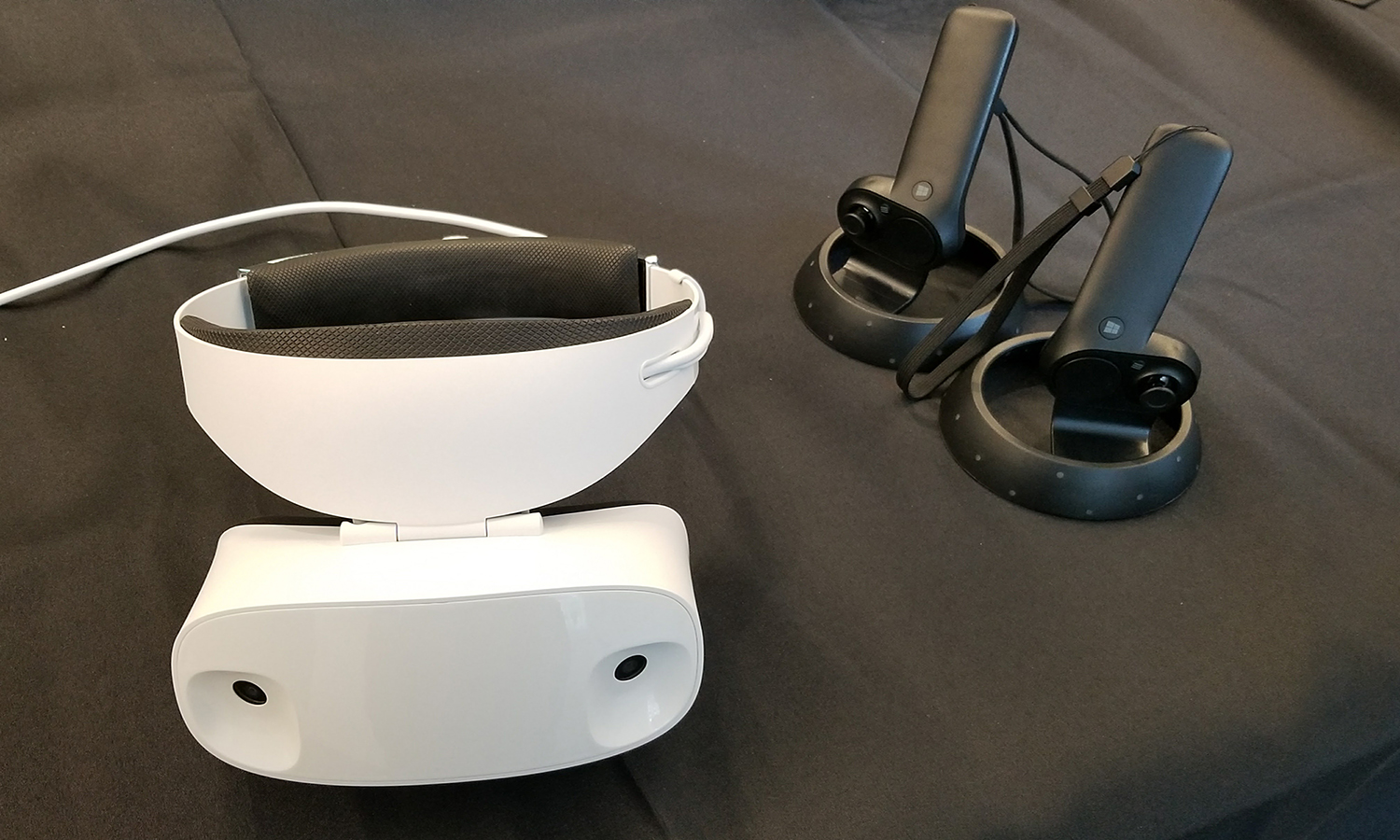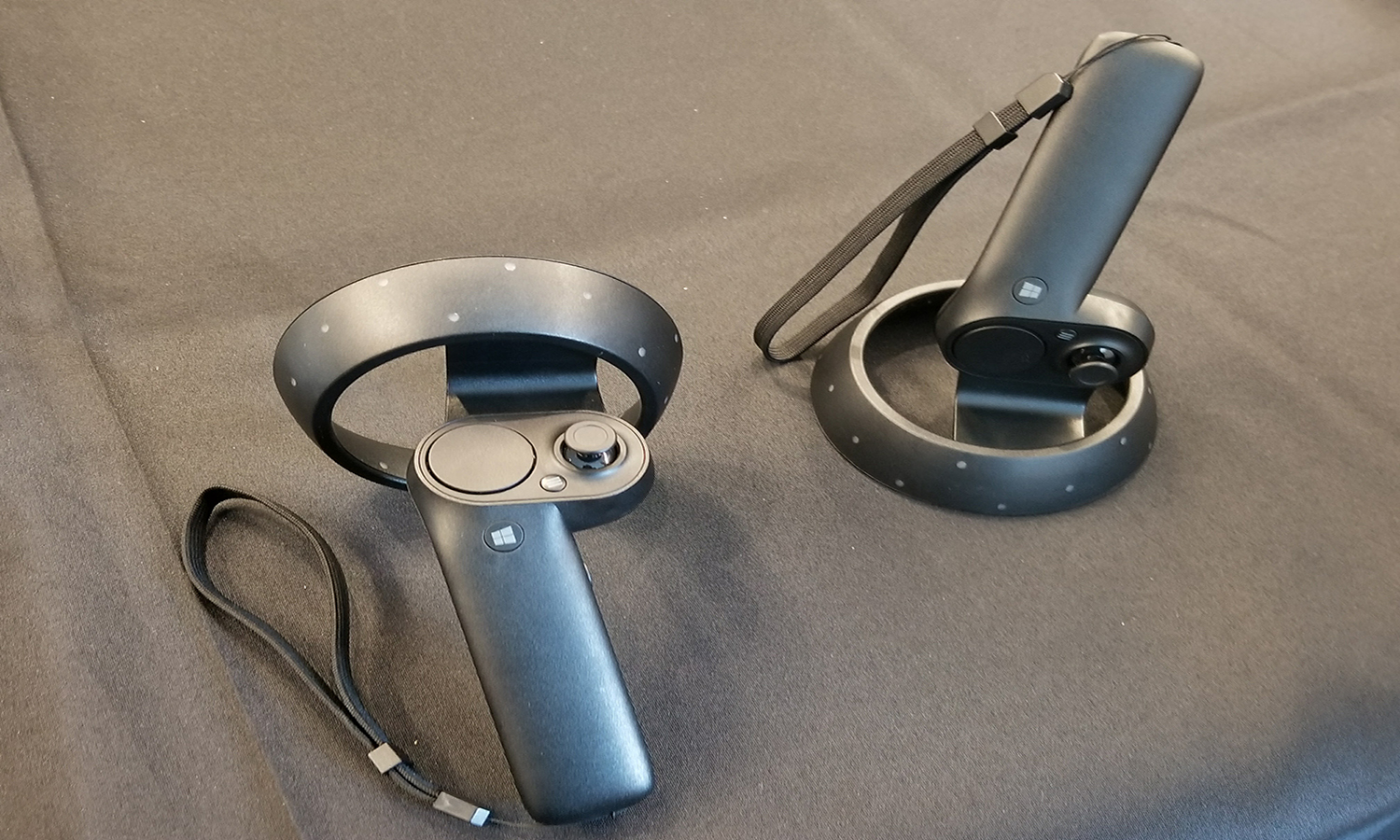Comfort Comes to Mixed Reality: Meet the Dell Visor
The $359 Dell Visor mixes virtual and merged reality in a comfortable-to-wear headset.

Think the virtual reality market is dead? Not if Dell has anything to say about it. The company recently announced the Dell Visor, which is scheduled to launch on October 17. The headset, which offers a mix of virtual and merged reality will cost $349 with an additional $99 for a pair of controllers or you can purchase everything in a bundle for $499.
The Visor's claim to fame is comfort. Relying on a circular headband with an adjustable thumbwheel similar to the PlayStation VR, Dell's headset puts an emphasis on being easy to wear. Although I still had to do a lot of maneuvering to get my massive hair into position, once my locs were settled, the arctic white device with its black plushy foam sat comfortably on my head with no noticeable pressure points.
The flip-up visor sat gently against my cheeks, and it's roomy enough to accommodate a pair of glasses. I especially like having the option of flipping the visor up if I want to take a break from whatever activity I was partaking in the virtual world.
MORE: Best VR-Ready Gaming PCs
If you're worried about keeping the Visor its lovely shade of white, Dell has added an anti-stain coating. If it works as advertised, the coating will keep the headset nice and clean. The cable management clip is another ergonomically feature I'm fond of. Instead of having a rat's nest of cables attached to the Visor, Dell streamlined things down to two cords — one to plug into your Windows 10 system and another for your headphones. The couplet of cords are held in place with a small clip, preventing tangles.

The Visor's two controllers are reminiscent of the Oculus Rift Touch Controllers as well as the HTC Vive's peripherals. However Dell's are noticeably larger than the Rift's and lighter than the Vive's. Each controller has a large black circle mounted at the top of the device. This halo has a number of white dots, which I imagine help the embedded positional tracking system in the visor locate where the controllers (and by proxy your hands) are.
There are several buttons along the center of the controllers, including what looks like a small circular touchpad similar to what the Vive's peripherals offer. There's a Windows button and menu button and a single analog stick on each device. You use the remainder of the black plastic device as grips.
Get instant access to breaking news, the hottest reviews, great deals and helpful tips.
MORE: Best VR-Ready Laptops
Unfortunately, the version of the Visor I used wasn't hooked up to anything. But Dell says that the headset is designed to work with Windows 10 and can run virtual and mixed-reality apps. While the 1440 x 1440 lenses in the device are actually better than what you'll find in either the Rift or the Vive (1080 x 1200 per eye), if you're using the Visor with a system with integrated graphics, it's not going to be as crisp as the former systems. Which means that for the best experience, you'll want a laptop or desktop with discrete graphics, which kind of defeats the purpose of Dell's low-cost VR/MR option.

When the Dell Visor launches, you'll find apps for the headset in Microsoft's app store. I'm just hoping that Microsoft has been hard at work seeding the store with a healthy catalog of content. If not, the Dell Visor and the other low-cost VR/MR headsets coming out at the tail-end of the year might be in trouble.

Sherri L. Smith has been cranking out product reviews for Laptopmag.com since 2011. In that time, she's reviewed more than her share of laptops, tablets, smartphones and everything in between. The resident gamer and audio junkie, Sherri was previously a managing editor for Black Web 2.0 and contributed to BET.Com and Popgadget.
 Club Benefits
Club Benefits





